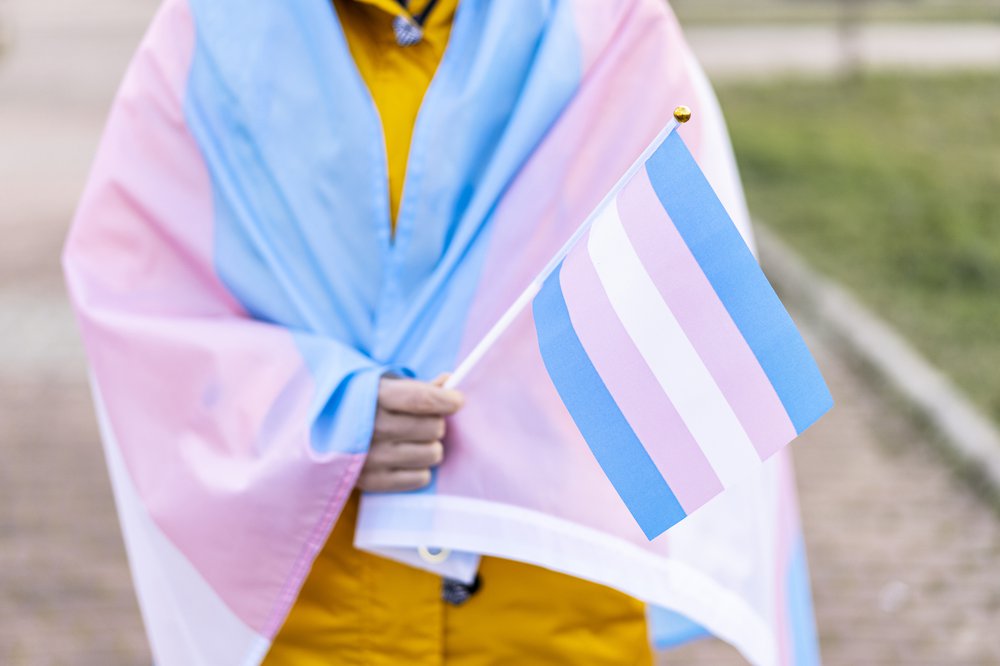How to support children and young people with their gender identity

At Action for Children, we want to make sure that young people of all identities feel supported. Here's how you can too.
We know from the work at our services that an increasing number of children and young people are presenting with a gender identity that’s different to when they were born.
We want to share our knowledge and experiences, to help you support young people explore and express their identity.
Find out how to get involved
Gender identity is a person’s internal, deeply held sense of their own gender. There're lots of terms associated with gender identity; here are some common ones you might come across:
Trans persons
An umbrella term for people whose gender differs from, or does not sit comfortably within, the gender they were assigned at birth.
Non-binary
Some people don’t identify as man or woman, but somewhere in between. Some may also identify as a mix of man and woman.
A non-binary young person may prefer a pronoun that doesn’t relate to male or female gender, such as ‘they’ or ‘zir’.
Gender fluidity
Gender fluidity is when people move between gender identities or expressions. Such fluidity may not be permanent.

Young people have a lot to think about. Exploring their sexual orientation or gender identity should be a positive experience. The most important thing is that you take an open and non-judgmental approach.
For many of these young people, this will also be a new experience, and everyone will have a unique set of needs. Here are some things to consider:
A trans young person may change their name and the pronoun they use. Some may wish to change their pronoun from ‘he’ to ‘she’ or vice versa.
It’s important to respect these, and listen to how a young person wants their name and pronoun shared, and with whom.
Make sure you help them understand the impact of sharing their new pronouns and how some people may react. You can build their confidence so they’re comfortable sharing these with others, if they wish to.

A trans young person may change how they dress to reflect their gender identity – this may also include their school uniform. They're more likely to feel comfortable in a school where all approved uniform items are available to all young people, regardless of gender.
However, sometimes uniforms or dress codes may differ for ‘male’ and ‘female’ students. To help with this, you can speak to the staff at their school, to ensure that they're able to wear the uniform that reflects their self-identified gender.
Additionally, you could speak to the school about the young person’s preferred use of toilets and changing facilities.

How children and young people are affected through this experience can differ greatly. Some may go through a difficult time emotionally whilst others may not. And it’s not uncommon for young people to have worries about discrimination when navigating their gender identity – it’s estimated that 24% of all homeless young people are LGBTQ+.
How to help?
You can help the young person you know by simply listening and being there for them.
Remember, being the adult they trusts means listening. Providing basic support is really valuable. And whilst every young person needs different things to feel comfortable, you don’t need to be an expert to make a difference. You’ll learn by listening.
Donate, volunteer or raise funds to support our work

Our previous work with young people like Charlie* made it possible for her to have the best start to adulthood after a difficult childhood. She shares how we supported her through her transition.
Some children and young people may need extra support to understand and accept their identity. They may also want to learn about people who are different to them, and understand that difference should be respected and celebrated.
A child or young person with additional needs is just as likely to question their gender identity as any other person. Make sure a child or young person’s words or actions aren’t automatically attributed to their additional learning needs.
For example, clothing types or hair length shouldn’t just be seen as a sensory need, or behaviours described as a new special interest, fascination, curiosity, or phase.

If you make a mistake, like using the wrong name or pronoun, it’s important to acknowledge it. The best thing to do is apologise to the young person and anybody else present, correct yourself and move on.
It’s also helpful to correct others too, so that everyone is working together. If the people involved in the young person’s life use their preferred name and pronoun all the time, rather than only when in their presence, it will make a significant difference.
A lack of experience shouldn’t stop you from offering support in the same way you do for any other child or young person. Every child will face challenges but with the support from people around them, they can better deal with their problems.
For free online advice whenever you need it





